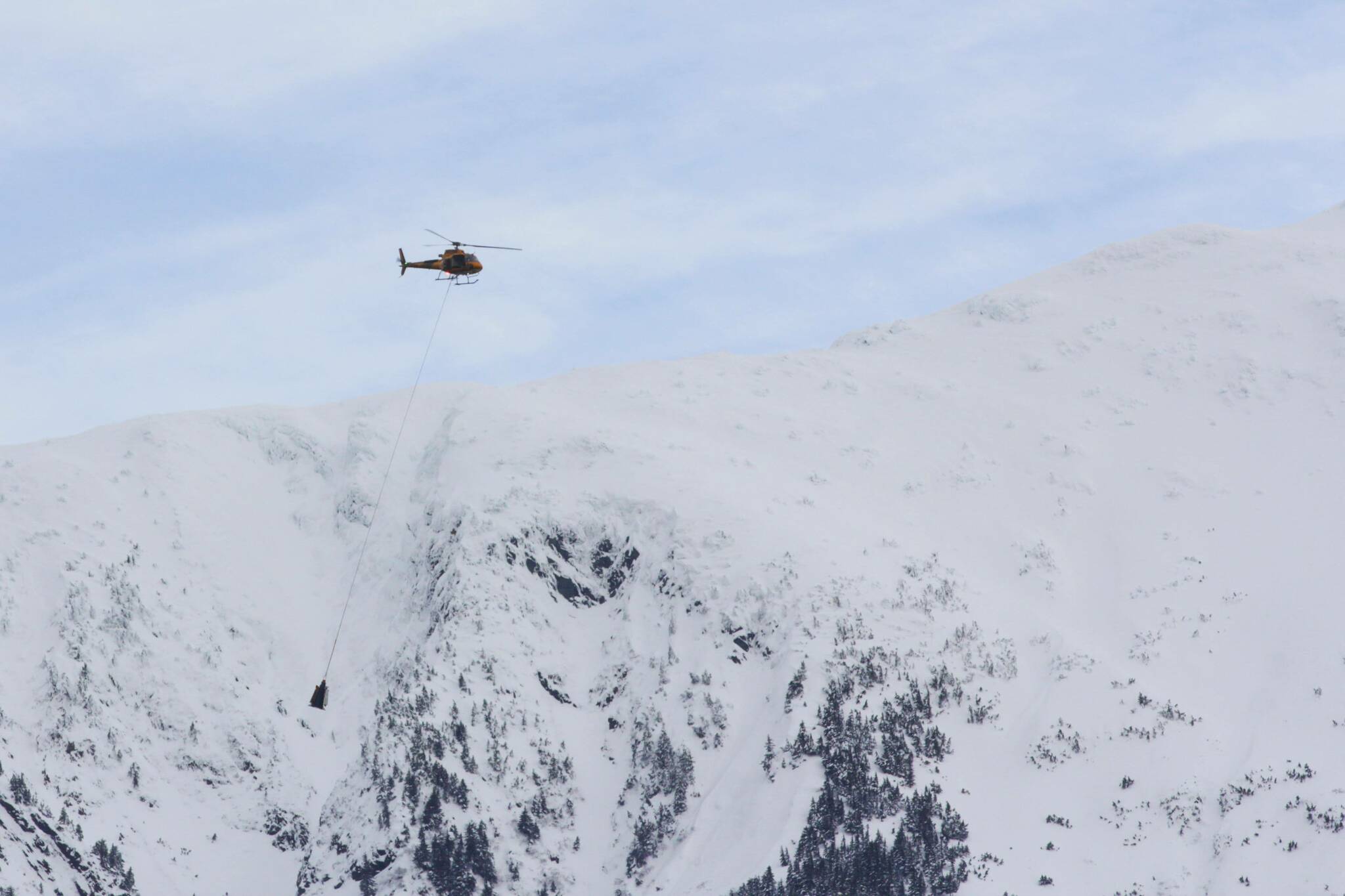Discussions about how — or whether — to adopt new maps showing 374 downtown structures located in avalanche or landslide-prone areas continued Monday night as the City and Borough of Juneau’s Committee of the Whole members heard an update on the process from city staff members.
In the coming months, CBJ Assembly members must decide whether to accept the new maps, when to do it and what regulatory changes may flow from the updated view of the risks.
CBJ commissioned the new maps in 2018 and paid for them with a Federal Emergency Management Agency grant. Scientists conducted fieldwork assessments in September 2019 and started sharing their findings publically over the summer.
“I think we all have recognized that we live in a volatile region,” said Alexandra Pierce, CBJ planning manager.
She told the committee that deadly landslides in the region over the last few years underscore the city’s need to work with the most up-to-date information about risks.
[New maps show updated landslide and avalanche risk downtown]
The new maps are more precise and offer a better view of the risks, Pierce said.
She said the new maps make it easier for staff members to do their jobs because they acknowledge the public safety hazard, which helps with emergency planning, land management and long-range planning efforts.
“It’s helpful for CBJ to work with accurate maps that are compatible with current mapping technology,” Pierce said.
Compared to the current maps, which were adopted in 1987 and are based on work done in the early 1970s, the new study area looks at a larger swath of land, differentiates landslide and avalanche zone and offers a higher-resolution view of the area.
The new maps also divide the risk into more categories for a more refined look at each area.
Based on the new maps, the number of properties that move into high/severe landslide zones grows from 173 to 374, including 217 properties that were not included in the 1987 severe zone. Because the study area is more extensive, many properties were evaluated for the first time.
“This is understandably a shock to many property owners,” Pierce said.
Pierce said that the city hopes to get more funding to learn more about the risk level throughout the community in the future. But, the initial study focused on the downtown area because maps already exist, and a lot of city infrastructure is located downtown.
[Records review shows legal woes for school board hopefuls]
New maps, new regulations?
Many property owners in the affected areas have expressed concern about adopting the maps and that a new hazard designation could affect property values, resale options and insurance costs.
Current regulations restrict development in high and severe hazard areas to restrict density, like accessory departments or subdivisions.
In July, a public meeting about the new maps attracted more than 100 people and resulted in several questions about the process and what the changes may mean for homeowners.
In August, the planning commission suggested additional public outreach and said city officials should consider the adoption of the maps and any related ordinance changes at the same time to “avoid unintended consequences.”
The commission also called for additional information about the mortgage and insurance implications of the new designations.
Pierce explained to the committee that new information from FEMA indicates that the city has the flexibility to follow that approach. She said that based on the initial grant, the city would need to adopt the maps and then pursue a regulatory process based on the changes. However, she now understands that the city can get FEMA funds to facilitate the additional public processes and to discuss regulatory changes as leaders discuss map adoption.
Deputy Mayor Jones Loren Jones, who served as chair of the meeting and is about to leave the assembly due to term limits that prevent him from running for another term, advised the committee members to pursue more public input.
“Whatever public process you choose to follow, we need to have consensus,” he said. “Or, you will fight a battle that’s unwinnable.”
Jones advised that city leaders consider the city’s legal exposure.
“If a big landslide occurs and there’s a loss of life, we will all feel terrible,” he said. “Even if we couldn’t have predicted it or done anything about it, some sharp-eyed lawyer is going to find a way to spend a lot of our money to fight it.”
• Contact reporter Dana Zigmund at dana.zigmund@juneauempire.com or 907-308-4891.

